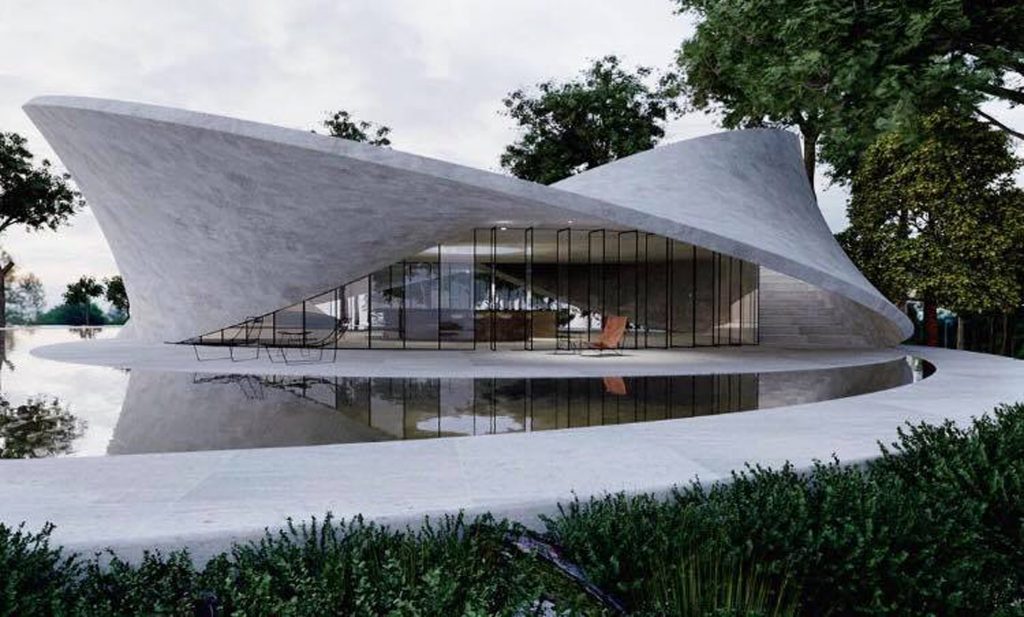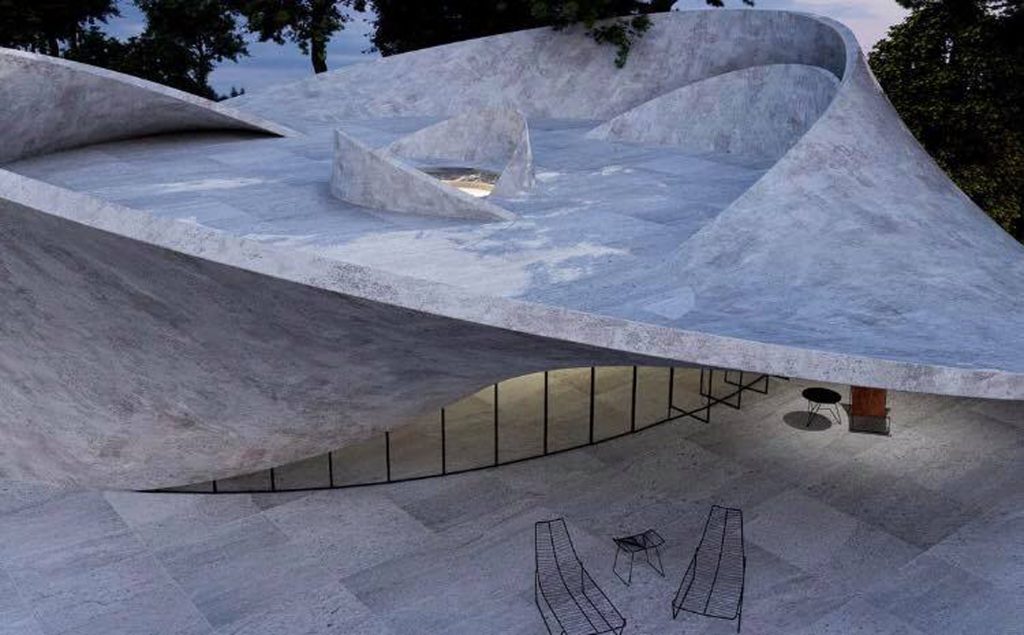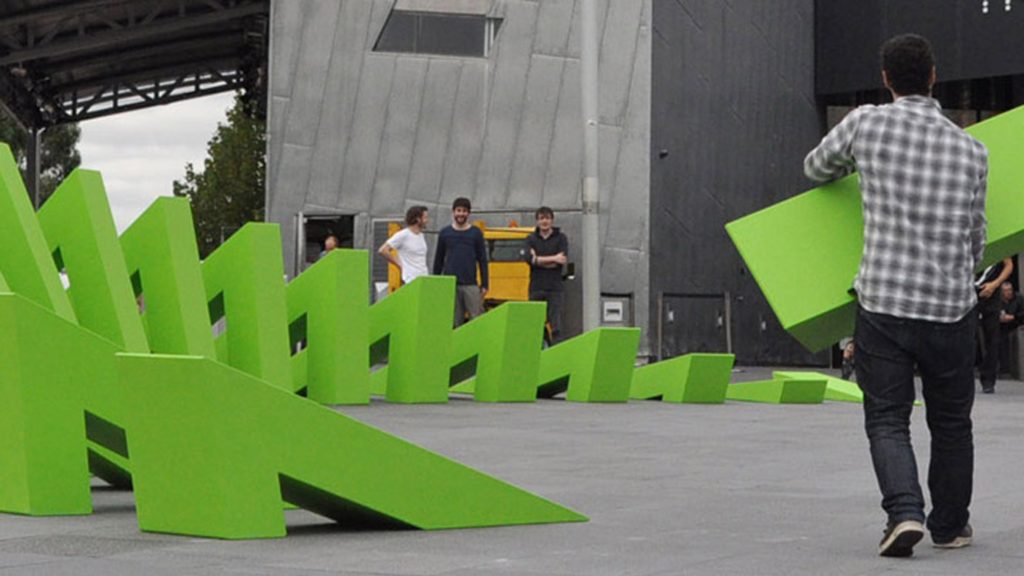Many designers, artists and architects are inspired by the Möbius — the non-orientable mathematical surface made up of only one side, with its inherent lack of interior or exterior. It was originally discovered — and named after, the German mathematician Augustus Möbius who lived and studied in the 18th and 19th century. Here we select three of our favourite current projects that use the Möbius in their design.

Mobius house by Antony Gibbon
Antony Gibbon embraces nature’s forms as a source of inspiration and pushing the boundaries of architectural design. He considers the environment as an important “driving force” behind his work and strives to ensure each structure is individually created to consider the surroundings using sustainable materials wherever possible. The aim is to “create a connection between Nature & Nurture, seeking a path to merge one into the other. To combine each unique, bespoke structure and its individual habitat and to develop harmony, so they grow together.”

Mobius house by Antony Gibbon
He’s elegantly blended architecture and the natural world in the design for his Mobius house. In this he investigates the Möbius and the spatial consequences of its application as a residential building. The concrete surface twists and peels around its circular enclosure, while large glass, floor to ceiling doors lead between living space and a surrounding, crescent-shaped swimming pool and the countryside beyond. The rooftop is spacious and the same size as the interior space, an area for viewing the surroundings.

Mobius Sculptural Console by Pierre Renart
French designer Pierre Renart is a tireless explorer of materials and passionate about production processes and transformation techniques to combine traditional wood know-how with new technologies. One of those techniques has seen him create carbon fibre covered rosewood, with which he created a sculptural console that is halfway between art and design. His Möbius Palissandre is an endless loop made from a carbon-fibre that is entirely covered with Santos rosewood. Inspired by the ribbon of the mathematician Möbius, the veneer is joined in such a way that, over the entire length of the ribbon, no joint can be seen because they are made following the veins of the wood. The ensemble gives the impression that the piece of furniture was made in one go, as if the wood had taken the shape of the sculpture while developing.

Mobius sculpture by Eness
ENESS is a multimedia design studio which works at the intersection of art and technology to combine disciplines including lighting, software, interaction design, product design, sculpture and architecture, meaning its outputs are often unique and unexpected. In the creation of its collaborative stop-motion sculpture, twenty-one large triangles were animated throughout Federation Square in Melbourne, Australia. This Möbius as a sculpture was designed so it could be configured into many cyclical patterns and behave as though it was eating itself, whilst appearing to sink into the ground. The result is an optical illusion and a time-lapse film, animated over two weeks, of people interacting with the sculpture and moving through this Melbourne landmark throughout the day.